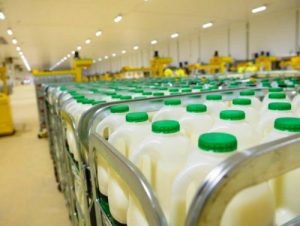SME sector ‘in demand’

DEMAND for goods made by SME manufacturers is improving at home and abroad, and production has stabilised, according to new figures produced by the CBI.
However, the business group has warned that cost pressures have intensified and access to credit remains a headache for some smaller firms.
Of the 402 manufacturing firms surveyed for the CBI’s quarterly SME Trends Survey, 36% reported a rise in the volume of total orders in the three months to April, and 26% a fall.
The resulting balance of +10% is the first significant growth since January 2008 (+10%).
A better-than-expected rise in export orders, thanks to the relative weakness of Sterling, accounted for much of the improvement.
A third of firms (33%) said export order volumes increased, 15% said they declined, giving a balance of +18% – the strongest balance since July 1995 (+21%).
The volume of domestic orders is also stabilising with 31% of companies reporting a rise, and 28% a fall, giving a rounded balance of +2%.
Manufacturing production remained steady during the quarter with a balance of +3% seeing output grow.
However, firms are seeing profit margins squeezed because of rising commodity and raw material prices, with a balance of +21% of firms reporting a rise in average unit costs.
This is the fastest growth in costs since January 2009 (+27%), and compared with a balance of +9% in the January quarter.
Meanwhile average domestic prices stabilised (a balance of +2%) after five consecutive quarters of deflation.
However, output prices are expected to pick up over the next three months (+11%).
Access to credit continues to prove a challenge for some firms, with 12% citing credit or finance constraints as likely to limit export orders, and 7% saying they are likely to act as a brake on output. Both figures remain above their long-run averages.
Russell Griggs, chairman of the CBI’s SME Council, said: “The UK’s smaller manufacturers are finally reaping the benefits of all their hard work as well as a relatively weak currency.
“Exports are growing steadily, domestic demand and production are stabilising, and firms are feeling more upbeat about prospects.”
He said that with demand expected to grow in the coming months, manufacturers were thinking about taking on extra staff over the next three months.
“However, firms are experiencing a sharp rise in raw material costs which is squeezing profit margins. But they do expect to recoup some of this by raising prices over the next quarter.
“It is also still a concern that access to credit remains a headache for some firms,” he added.
Looking ahead to the next three months, total orders are expected to grow again, albeit at a slightly slower rate (+7%).
Domestic orders are expected to remain stable (+1%), while solid growth in exports is anticipated (+14%).
Given improving demand and a predicted end to de-stocking, output is expected to grow significantly (+12%).
A net 14% of firms are more optimistic about general business prospects than three months ago, the highest quarterly balance since April 2004 (+14%).
There was little change in numbers employed after six consecutive quarters of job cuts (-3%), and firms expect to increase their headcount marginally in the next quarter (+4%).
If realised, this would mark the first increase in employment since July 2008 (+6%).
Over the year ahead, firms plan to invest more in product and process innovation, as well as training and re-training.
However, intentions for investment in buildings and capital equipment remain weak.
The April 2010 CBI SME Trends Survey was conducted between March 22 and April 7. The total response was 402 manufacturing firms with fewer than 500 employees, of which 345 employed fewer than 200 staff.








